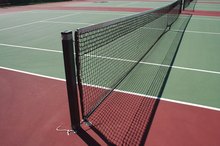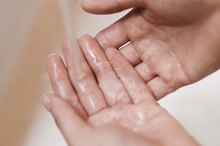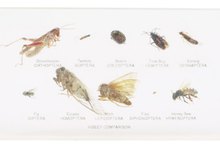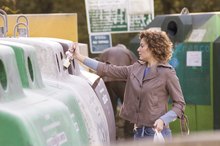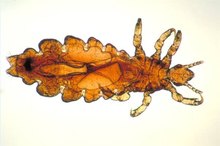How to Use Malathion on Vegetables
Malathion is one of the oldest insecticides in use, first produced in the United States in 1950. In addition to agricultural and mosquito control uses, the chemical, classified as an organophosphate, provides the primary ingredient in dozens of home garden products. Use of any chemical insecticide that contains malathion should be a last resort in cases of serious infestation. It should follow the failure of cultural controls, natural solutions such as insecticidal soap or neem oil, and biological controls.
Identify your target. Malathion kills many sucking insects on a wide range of fruits and vegetables. It also kills pollinating insects such as bees and impacts habitats by killing insects that occupy food chains, particularly in wild aquatic habitats such as habitats of salmon species in the northwest United States.
How to Clean a Tennis Court
Learn More
Shop for the right preparation. Read all the labels, including which specific insects respond to the insecticide and vegetables on which to use it. Your target species, be it leafhopper, cabbage worm, red spider mites or just an overwhelming plague of aphids, should be listed as well as the specific vegetables in your garden.
Choose a calm, dry day according to the schedule for your crop that is printed on the product label 4. Wind must be calm to avoid overspray, and rain speeds up malathion’s disintegration; its effectiveness declines rapidly after 24 to 48 hours. The label specifies how many times a season the product may be used safely 4. Observe also the necessary interval between applications for each crop as well as the waiting period before harvest.
A Sanitation Activity for Kids
Learn More
Suit up and cover ponds, play sets and other children’s toys that cannot be moved out of the area. Wear long sleeves, old shoes or garden boots, socks and slacks; choose unlined neoprene gloves to handle the product. Have a hose at the ready to spray down surrounding areas, items, people or pets that accidentally receive sprays of the insecticide.
Mix insecticide according to label directions in containers, such as tank sprayers, that you use only for insecticides. Mix insecticide and water thoroughly.
Spray evenly, covering both upper and lower leaf surfaces. Spray away from yourself and others in the area.
Rinse all equipment, including gloves and garden boots in plain water when you finish spraying. Wash equipment over the garden to help keep insecticide out of storm drains.
Tips
The calmest parts of the day are in very early morning and just around sunset. Secure children and pets before spraying. Malathion is a non-systemic pesticide, so any residue will be on the surface of vegetables. Observe the waiting period and wash vegetables in clean water upon harvest.
Warnings
Remove contaminated clothing before wearing it again. Wash hands, face and other exposed skin after spraying. Never dump malathion in a manner that facilitates its flow into storm sewers or waterways. Contact your local department of public works or environmental department for information about disposal of unused pesticide and empty containers. Malathion breaks down on surfaces and in soil within several days to several weeks, depending on the product. Direct contact with small amounts by ingestion, inhalation or contact with soft tissue can cause difficulty breathing or irritation. Read package label cautionary statements completely before using the product.
Related Articles
References
- North Dakota State University; Garden Insect Control Guide; Dean K, McBride; 1996
- Oklahoma Cooperative Extension; Home Vegetable Garden Insect Pest Control; Jonathan Edelson, et al.
- Centers for Disease Control; Public Health Statement for Malathion; 2003
- Spectracide: Product Label
- Environmental Protection Agency; National Marine Fisheries Biological Opinion; 2008
Writer Bio
An avid perennial gardener and old house owner, Laura Reynolds has had careers in teaching and juvenile justice. A retired municipal judgem Reynolds holds a degree in communications from Northern Illinois University. Her six children and stepchildren served as subjects of editorials during her tenure as a local newspaper editor.
